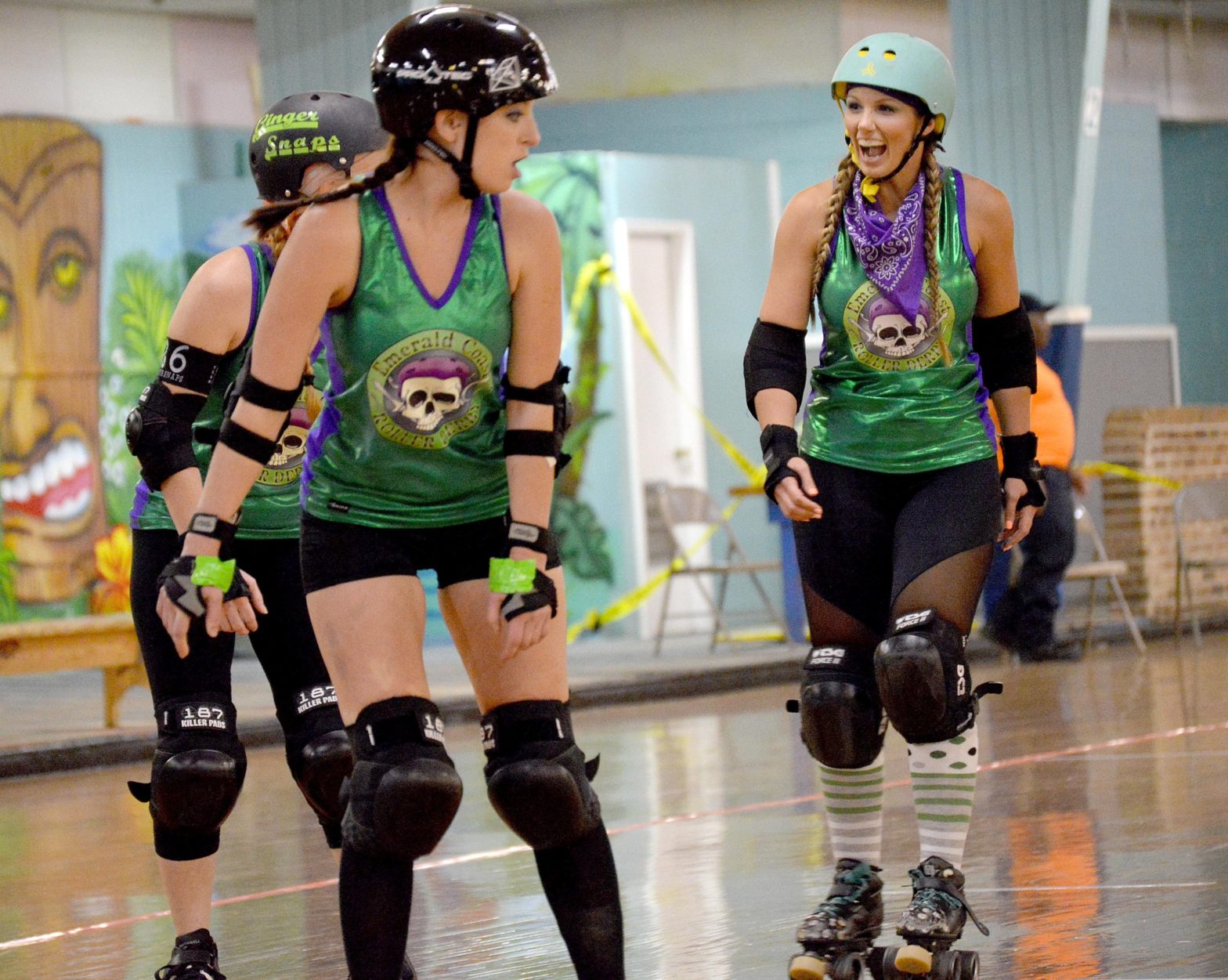MILTON — The Emerald Coast Roller Derby league is breaking stereotypes one bout at a time.
The Milton-based league plays for the Women’s Flat Track Derby Association, whose more than 800 leagues annually vy for a world cup.
And local players are making strides.
“As of right now, I have five girls on not just a U.S. team, but international teams that I know will be playing in our (February 2018) world cup,” said Ariel Staten, head coach and president of ECRD. She’s called “Rajin Cajun” on the track.
‘SOMEBODY KNOWS SOMEBODY’
The Northwest Florida and South Alabama areas have numerous roller derby teams. ECRD’s sister league is the Pensacola Roller Girls. Others include Panama City’s Sugar Sand Roller Dolls; The Beach Brawl Sk8r Dolls, the home team of Panhandle United Roller Derby; and Mobile’s Derby Darlings.
In most areas, it’s about an hour’s drive between roller derby teams. It’s rare that leagues are this close together.
“You can’t throw a stone without hitting somewhere that has a roller derby league,” Staten said.
Why does someone join a roller derby team?
Well, Staten, who has been involved with the sport about five years, said she wanted something to do to fit in when she moved to Okinawa, Japan, with her husband who is in the military.
“As many teams and leagues as there are, it’s also kind of like the military,” she said. “It’s a very small community. Somebody knows somebody somewhere.”
ECRD practices twice a week at Skateland Roller Rink in Milton — three hours on Sunday, two hours on Wednesday.
They participate in numerous community events consistently throughout the month, since they have to meet a participation requirement to be an active member.
The league participates in local events such as Scratch Ankle and Bands on the Blackwater. They volunteer at an animal shelter, participate in parades and aid fundraisers for nonprofit organizations like the JDRF Walk for junior diabetes awareness.
‘DIFFERENT KIND OF BOND’
Not only girls play the sport. There are men’s teams and co-ed teams around the world. Most of the men in this area travel to New Orleans to play with their team, Brass.
There also are other associations, like USA Roller Sports, across the country.
ECRD can have 14 girls, 18 years or older, on the roster for a game, but there is no team member limit. On an average practice night, there can about 20 girls, excluding non-skating officials and referees.
“There is still the stipulation that we are everybody’s mother’s roller derby,” Staten said. “It makes a cap that we have to break of the [stereotype] that we are still that rough-and-tumble roller derby that people used to watch.”
Many people may think of roller derby as the rough type from the 1970s. According to ECRD, that is not how they play anymore. It’s now a strategic game of offense and defense.
And the result is a community of women who are there for each other on and off the court.
The community has “derby wives” with whom the girls do everything. These women don’t have to be in their same league, but it does happen.
“It’s a different kind of bond,” Staten said. “It’s not like it was in high school when you played sports. You put that many alpha females together and its just a different kind of bond.
“We’re there for each other, we’re sisters.”
Roller derby is played by two teams of up to 14 players, who both field up to five members for each two-minute jam, simultaneously skating counterclockwise on a circuit track.
Each team designates a scoring player (the "jammer"); the other four members are "blockers." One blocker can be designated as a "pivot" — a blocker allowed to become a jammer during play. The jammer wears a helmet bearing two stars; the pivot wears a striped cover; the remaining members' helmets are uncovered.
A bout is played in two periods of 30 minutes. Point scoring occurs during "jams": plays that last up to two minutes. During a jam, points are scored when a jammer on a scoring pass (every pass a jammer makes through the pack after the initial pass) laps members of the opposing team.
Each team's blockers use body contact, changing positions and other tactics to assist its jammer to score while hindering the opposing team's jammer. Certain types of blocks and other play are violations; referees call penalties and require violators to serve time in a penalty box.
HOW TO PLAY
This article originally appeared on Santa Rosa Press Gazette: 'We're sisters'
